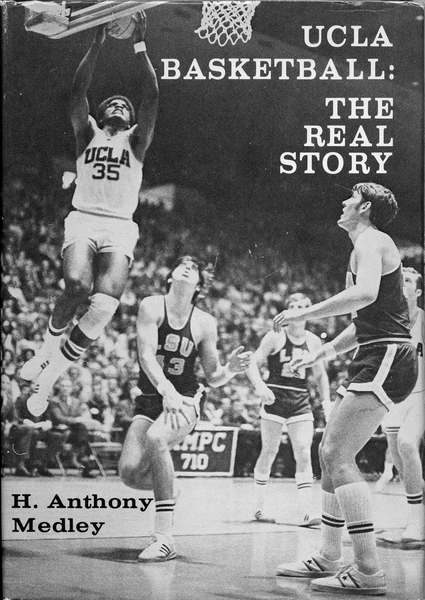|
Out of print for more than 30 years, now available for the first time as an eBook, this is the controversial story of John Wooden's first 25 years and first 8 NCAA Championships as UCLA Head Basketball Coach. Notre Dame Coach Digger Phelps said, "I used this book as an inspiration for the biggest win of my career when we ended UCLA's all-time 88-game winning streak in 1974." Compiled with more than 40 hours of interviews with Coach Wooden, learn about the man behind the coach. Click the Book to read the players telling their stories in their own words. This is the book that UCLA Athletic Director J.D. Morgan tried to ban. Click the book to read the first chapter and for ordering information. |
|
The Young Stalin by Tony Medley What do you know about old Joe Stalin? That he killed 25 million kulaks? Had a moustache? Fat? Bad guy who took over when Lenin suddenly died fairly young? Opportunist? Well, maybe all these things are true, but Sebag Monefiore has written one of the best researched books Iíve read that captures the early part of Stalinís life and pictures someone much more formidable that I had thought. ďThe Young StalinĒ is exhaustively footnoted. He has authority for virtually everything he reveals. Stalin was born in 1879 of a cobbler and his wife. His father was a falling down drunk, illiterate, and fought to keep his son, Sosa, illiterate. Stalinís mother fought equally hard to teach him to read, eventually getting him into an upscale seminary, where he became an avid reader and a confirmed atheist. Stalin was there for at least five years. He became a committed Marxist and basically never held down a real job. He was thin, extremely unlikable, a bull in a china shop, but brutal and, clearly, a leader. He devoted his life to the Revolution. He dressed slovenly. He had innumerable lovers, one only 13 years old whom he met in exile, and fathered several illegitimate children, two by the girl he started sleeping with when she was 13-years old. He was arrested and exiled several times, but life wasnít like life in his Gulags. When one was sent to Siberia by the Tsar, they lived as lodgers in homes and were barely supervised. They could roam freely. Not only that, he was a poet and a writer. He edited Pravda and other newspapers. In fact he had the sole responsibility for getting the papers published. Lenin held him in high regard. The story of the actual takeover of Russia was accomplished by so few it boggles the mind. In fact, itís almost something out of a Marx Brothers movie. Many know that Lenin was in Switzerland when the Tsar abdicated. He came back, was in hiding, and when he went out had to dress in disguise until after they seized control. There was no great Red Army upon whose back they rode to victory. It was just Stalin and a few of his comrades who took over the government by sneaking into a building and upstaging the people who had control. Kerensky, the only man who could have stopped it, is pictured as a drug addict. The only downsides are that itís almost impossible to keep all the Russian names straight, so you really donít know to whom Montefiore is referring. Another problem is that Stalin had something like 35-30 aliases during his lifetime. Sometimes in the same paragraph Montefiore refers to him by three different names. Very confusing. Despite those small shortcomings, this is a fascinating book that reads like a novel. I couldnít put it down. January 31, 2008 |
|
|
